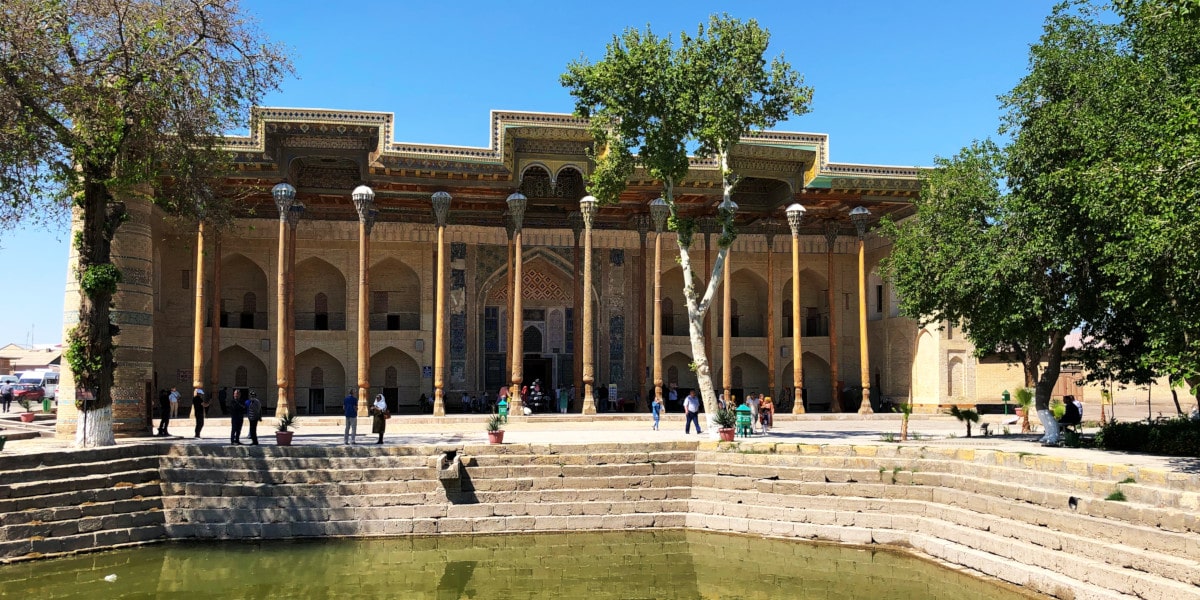The oldest part of the complex is the water reservoir, which was formerly used to supply water to the population and was already called Bolo-Khauz (Children’s pond). Its shape is square, with rounded corners and sides about 20 meters long. On clear days, the water surface reflects the mosque’s façade.
The mosque itself was built in 1712 by order of Emir Shahmurad. At first, it was conceived as a public mosque. The legend says Emir (ruler) wanted to be closer to the population and attended the mosque during Friday prayers. They say the path from his citadel Ark to the mosque was covered with Bukhara red carpets.

The mosque building has a rectangular shape estimating 27 by 20 metres. The mosque is made of plain bricks on three sides, but an impressive iwan is attached on the portal side, which is supported by twenty 12.5-metre columns. The columns are individually designed, and their tops are beautifully painted. If you stand directly below the pillar and look upwards, yellow stars appear, which you cannot see from any other angle.
The prayer hall walls are decorated with readings from the Koran, scattered across the room on a blue background, like a ribbon. Notable is the dome, which is decorated with a golden tone.
The mosque is unusual architecturally: small rooms (“hujras”) attached to the mosque, which pilgrims used.
The mosque was fully restored between 1914 and 1917. The youngest part of the complex is a short ten-meter minaret designed by the famous architect Shirin Muradov. It stands slightly offset, next to the water pool.
The mosque is active for prayers, and many believers visit it daily. However, outside of prayer time, it is open to everyone.